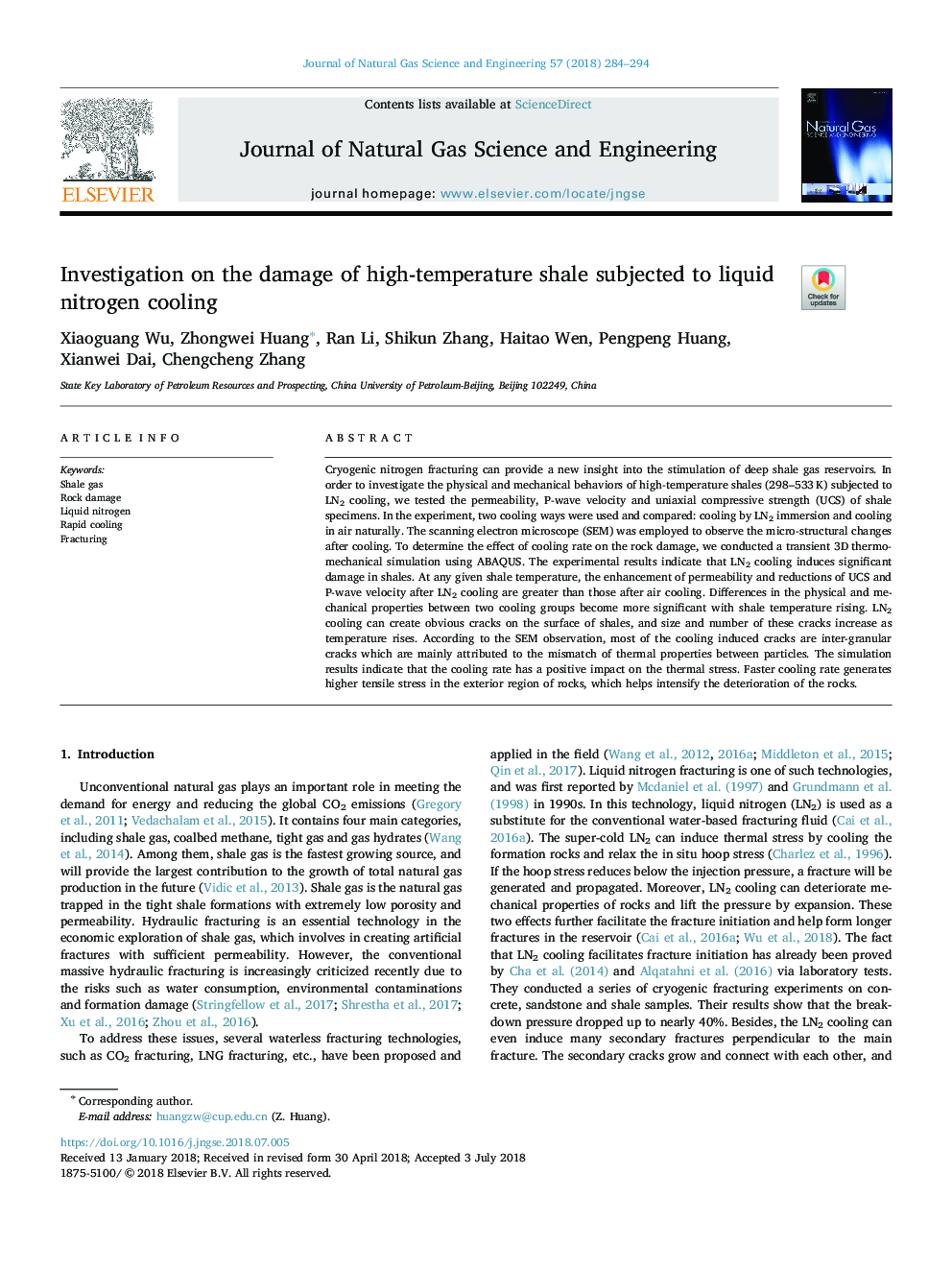| Article ID | Journal | Published Year | Pages | File Type |
|---|---|---|---|---|
| 8127816 | Journal of Natural Gas Science and Engineering | 2018 | 11 Pages |
Abstract
Cryogenic nitrogen fracturing can provide a new insight into the stimulation of deep shale gas reservoirs. In order to investigate the physical and mechanical behaviors of high-temperature shales (298-533â¯K) subjected to LN2 cooling, we tested the permeability, P-wave velocity and uniaxial compressive strength (UCS) of shale specimens. In the experiment, two cooling ways were used and compared: cooling by LN2 immersion and cooling in air naturally. The scanning electron microscope (SEM) was employed to observe the micro-structural changes after cooling. To determine the effect of cooling rate on the rock damage, we conducted a transient 3D thermo-mechanical simulation using ABAQUS. The experimental results indicate that LN2 cooling induces significant damage in shales. At any given shale temperature, the enhancement of permeability and reductions of UCS and P-wave velocity after LN2 cooling are greater than those after air cooling. Differences in the physical and mechanical properties between two cooling groups become more significant with shale temperature rising. LN2 cooling can create obvious cracks on the surface of shales, and size and number of these cracks increase as temperature rises. According to the SEM observation, most of the cooling induced cracks are inter-granular cracks which are mainly attributed to the mismatch of thermal properties between particles. The simulation results indicate that the cooling rate has a positive impact on the thermal stress. Faster cooling rate generates higher tensile stress in the exterior region of rocks, which helps intensify the deterioration of the rocks.
Related Topics
Physical Sciences and Engineering
Earth and Planetary Sciences
Earth and Planetary Sciences (General)
Authors
Xiaoguang Wu, Zhongwei Huang, Ran Li, Shikun Zhang, Haitao Wen, Pengpeng Huang, Xianwei Dai, Chengcheng Zhang,
